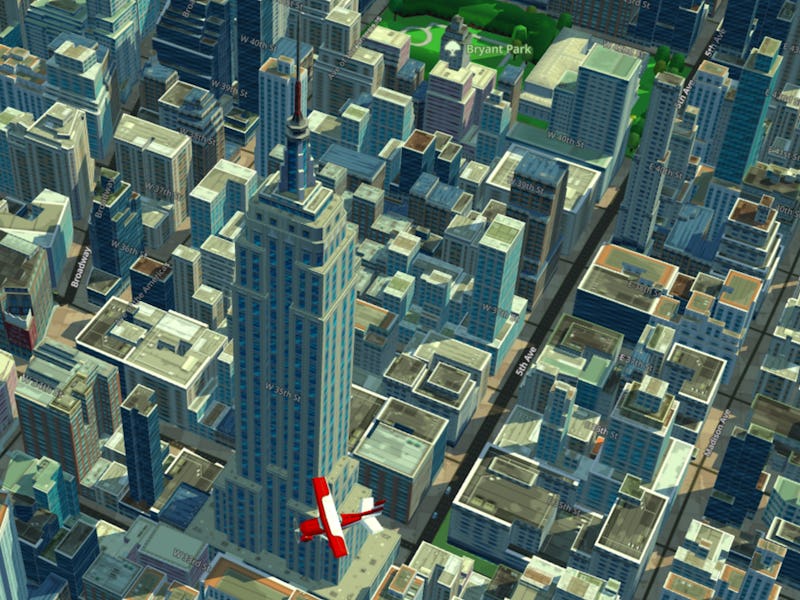Faizaan Ghauri wants maps to be a lot less like old, crunchy scrolls and a lot more like the city itself — a living, breathing entity. He thinks navigation should be fun. Hard to believe that’s a radical idea, no?
Ghauri is the head of the 3D mapping platform WRLD, formerly known as eeGeo. WRLD’s maps of the globe are accurate, comprehensive, and even go indoors. They also look a lot like a video game.
That’s by design, Ghauri says. “It’s inherently a lot more engaging than your typical Google or Apple Maps,” he says of the platform. According to Ghauri, his data shows users spend three times longer on WRLD maps then on their more staid competitors. (Unfortunately, they’re are also a little harder to use in daily life, as a lot of WRLD maps are used by private business.)
On Thursday, the company, founded as eeGeo in 2010 and based in Dundee, Scotland, announced a new vision for its future. It’s now called WRLD — and it’s moving to Los Angeles.
A WRLD 3D map of London.
The move is a strategic one. WRLD’s platform allows mapping for web browsers and mobile, as well as augmented and virtual reality. Ghauri, whose background is in the video game industry, thinks that more and more people will be moving toward these latter mind-bending technology in the future — and taking their maps with them.
Right now, the majority of WRLD’s maps are used by private companies. While numerous mapping companies have experimented with indoor mapping, most require that those maps become public. WRLD allows companies to choose whether they want their maps to be public or private. That allows for transportation hubs to be mapped from the inside out and shared with everyone. But mostly it means that a company can map its assets — secret safes and all — and keep it in the hands of those on the small, private “need to know” list.
WRLD maps don't stay on the street. They create accurate interiors, too.
But Ghauri sees Los Angeles as the world’s incubator for augmented and virtual reality. He hopes that he can connect game developers with his true-to-life 3D maps to make immersive experiences like Pokemon Go available everywhere. This could be a boon to gaming, but also to museums, tour companies, and more.
There’s also the potential to use these maps to enhance the driving experience. While Apple, Google, and other mapping apps can get you from point A to point B, Ghauri thinks WRLD should be able to do that and make the experience more fun.
Smart city data can also be mapped in WRLD.
For those hoping to use it as a replacement to Google or Apple Maps, WRLD in its current state will be a little disappointing. The app shows you where you are — and lets you search for where else you might go — but it won’t really help you get there. But for those looking forward to a future of autonomous cars that make mornings leisurely and gameify commutes, the setup looks pretty sweet.
